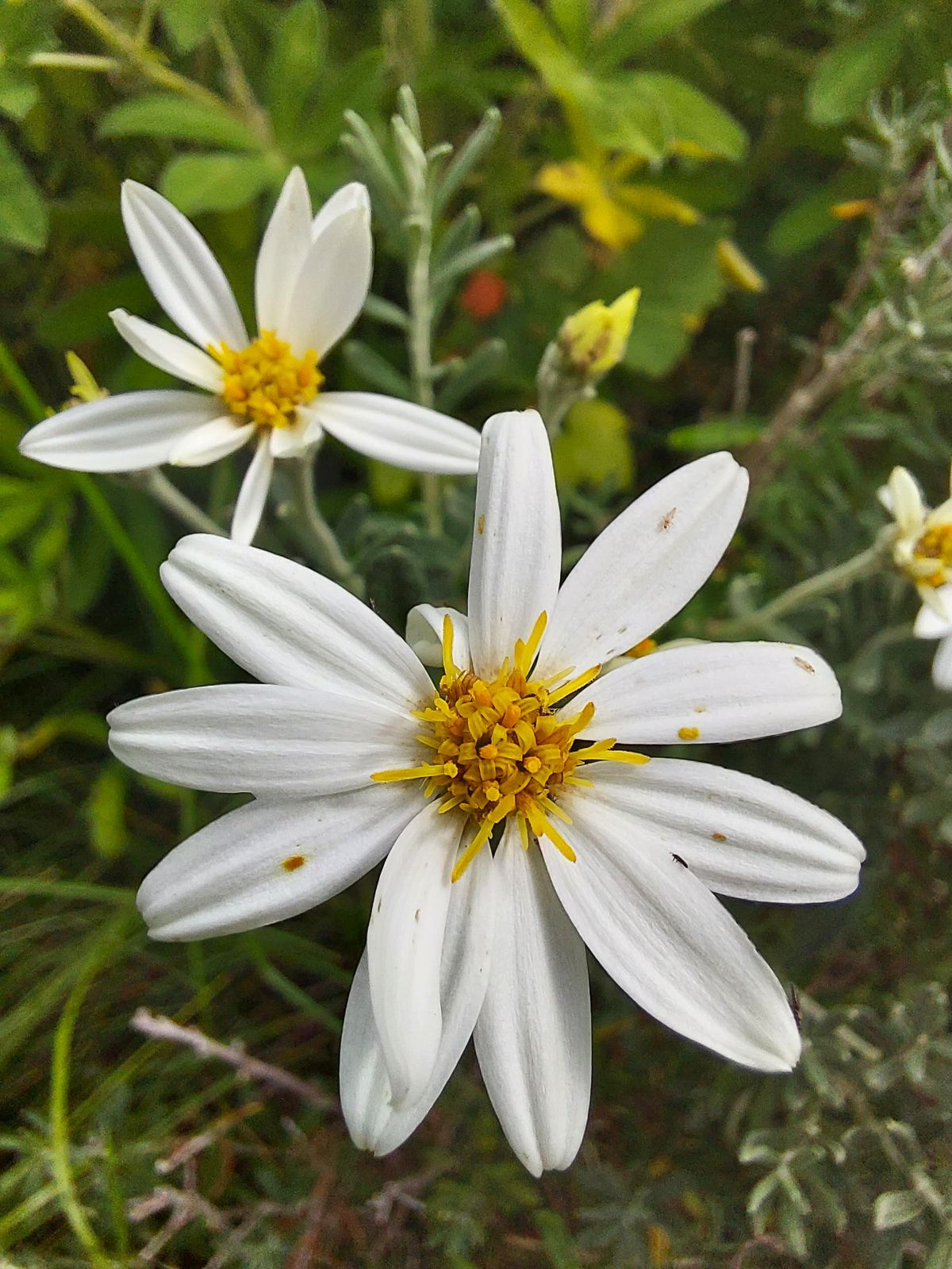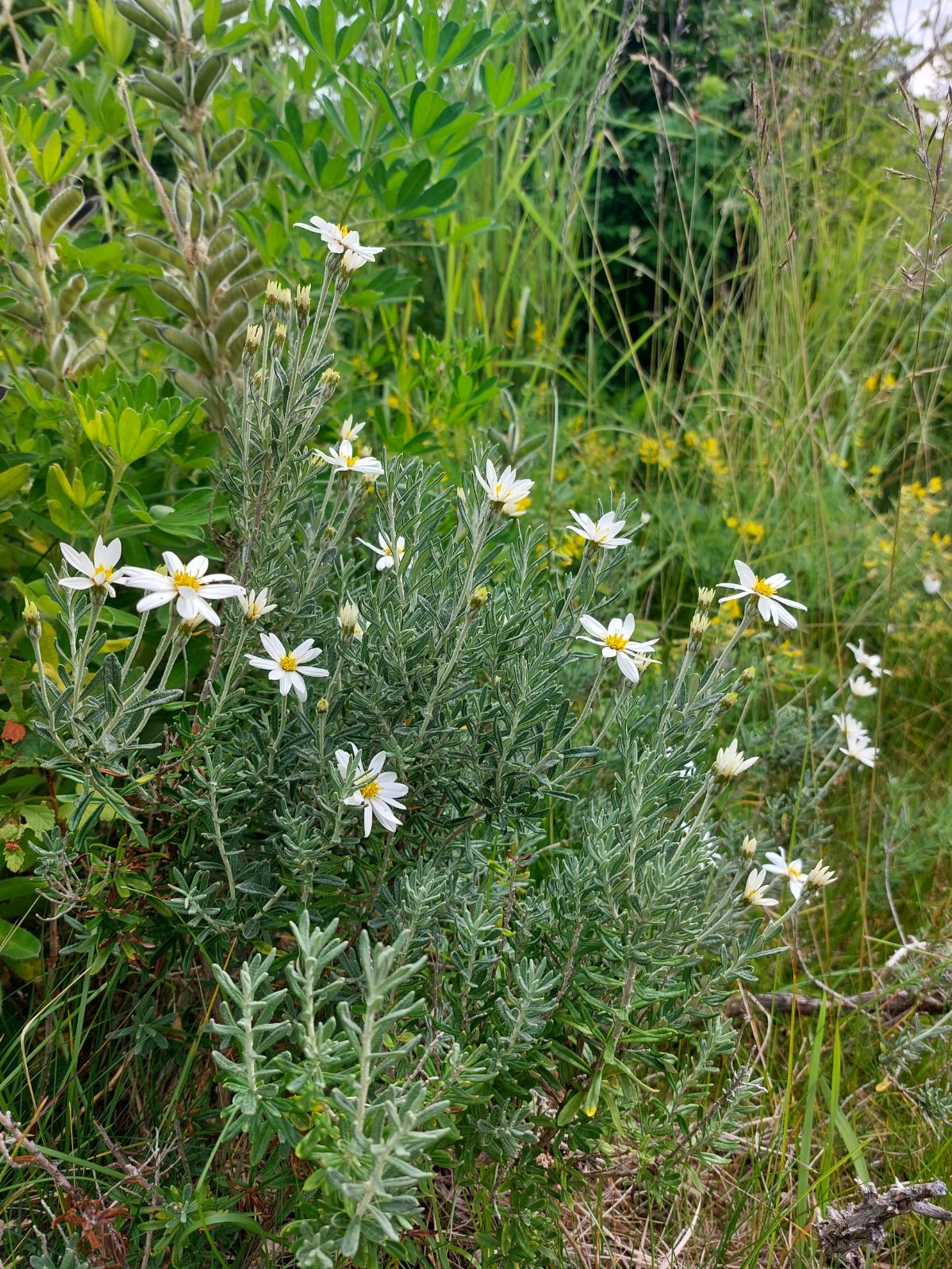Chiliotrichum diffusum
Credits
Article from Bean's Trees and Shrubs Hardy in the British Isles
Recommended citation
'Chiliotrichum diffusum' from the website Trees and Shrubs Online (treesandshrubsonline.
Genus
Synonyms
- Amellus diffusus Forst.
- C. amelloideum Cass.
- C. amelloides DC.
- C. rosmarinifolium Lessing
Other taxa in genus
An evergreen shrub 1 to 3 ft high in a wild state and 6 ft or more wide; young shoots often erect, clothed with white down. Leaves alternate, closely set together on the stems. In the form most widely cultivated in this country they are linear, stalkless; 3⁄4 to 2 in. long, 1⁄12 to 1⁄6 in. wide; grey with down above when young, more thickly covered beneath, becoming glabrous and dark green above; margins very much recurved; midrib deeply impressed. In the typical form, cultivated as “C. amelloides diffusum” the leaves differ in being wider and having a rust-coloured indumentum beneath. Flower-heads 1 to 2 in. wide, terminal, solitary on downy stalks 2 to 4 in. long; ray-florets about twelve, pure white, linear; disk-florets bright yellow. Bracts below the flower-heads (collectively known as the ‘involucre’) in four or five series, ovate-oblong, pointed, woolly, margined with hairs.
Native of southern S. America in the Andes of Chile and Argentina, descending to near sea-level around the Straits of Magellan, where it was discovered in 1774 during Cook’s second voyage; also found on the Falkland Islands. The type of Lessing’s C. rosmarinifolium was collected by Poeppig in the Chilean Andes and in this form Richard Pearce also found it when collecting for Veitch’s nurseries. But it does not seem to have reached cultivation until Comber introduced it during his 1925–7 expedition. His form is a rosemary-like plant so far as the foliage goes, but its flowers are simply like enormous daisies. It needs a sunny, sheltered position and is likely to be seen at its best in mild coastal gardens. It has never been common, but is hardier and more beautiful than most of its allies, the olearias.


